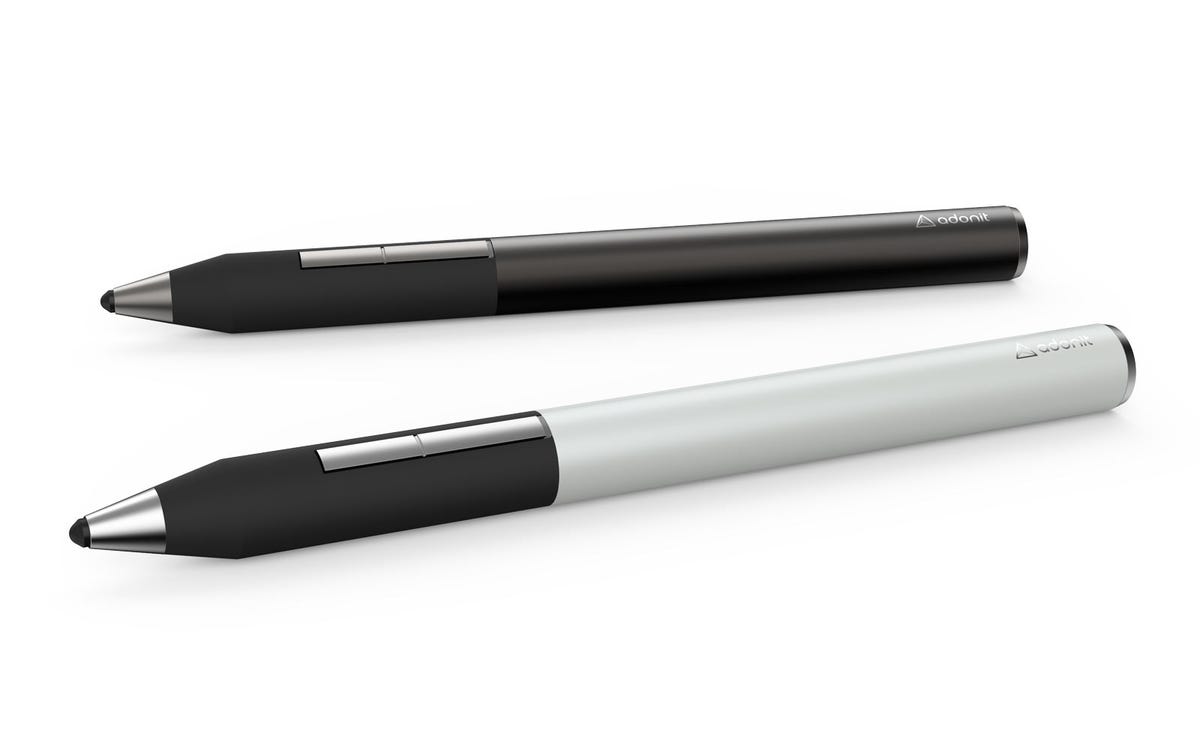
Adonit
Adonit, maker of the Jot Touch and other styluses for the touch-screen era, plans to expand from its current hardware business into software.
The 180-person company got its start in 2011 with a Kickstarter fundraising campaign to build a stylus that acts like a fingertip and can be detected by iPads. That was a departure from earlier stylus products, notably those from Wacom, that required a special screen adapted to monitor the stylus. And newer Adonit styluses have grown more sophisticated with Bluetooth connections that let iPads register how much pressure is being applied.
The stylus competition has stiffened, though, with alternatives like the Hex3 Jaja, Pogo Connect, and Wacom Intuos Creative Stylus , all of which offer pressure sensitivity. So it’s easy to see why Adonit might be eager to branch out and find new revenue sources.
“The next thing we’re launching will be software,” Kris Perpich, Adonit’s chief experience officer and one of its five co-founders, said in an interview this week. It will be an iPad app for consumers that will showcase “how we think styluses should work.”
The company, which is based in Taipei, Taiwan, is beta-testing the app now and expects to launch it in 2015, he added.


Adonit
He didn’t share details but said it won’t compete with products from Adonit business partners like Adobe Systems and Evernote. Adonit makes styluses for those companies, with a focus on artistic and design creativity with Adobe and a focus on note-taking productivity with Evernote. “In looking at the market, we found a unique space to live in so we’re not cannibalizing partners,” Perpich said.
Partners are important for stylus makers. To use advanced features, software makers must use stylus makers’ software developer kits for compatibility. So angering those software companies with direct competition might not be wise.
iPad Pro?
It looks unlikely that Apple will release a rumored 12.9-inch iPad Pro
on Thursday, but Perpich would love to see a larger, more powerful tablet.
“I think it makes complete sense for Apple to do that,” said Perpich. “We think styluses get even better with a larger iPad. When you have more screen real estate, they get easier to use. With an iPad Mini, if you put your hand down with a stylus, you cover up most of the screen.”
An iPad Pro would help Apple keep its ecosystem advantage when it comes to design and drawing apps, Perpich added. “They have a lot of developers there, and they’re making developers a lot of money,” he said, and those developers would be eager to follow Apple into the market for a larger, more powerful iPad.
Stylus challenges
One big challenge for styluses has been latency — the delay between when a line is drawn and when it appears on the screen. That latency is a function of tablet hardware, stylus hardware, the tablet’s operating system and the app’s drawing engine. The more sophisticated the drawing engine’s features — for example, adding pressure sensitivity that affects complex virtual brushes — the longer the latency. Newer iPads fare better, though, he said.
Another challenge comes from tablets’ glassy screens. “They don’t feel as natural as pen on paper,” Perpich said.
But the company has found a commercial niche. So far, Adonit has shipped “a little over 3 million” styluses in its three-year history. The goal, Perpich said, is “to make styluses as accessible as possible.”



